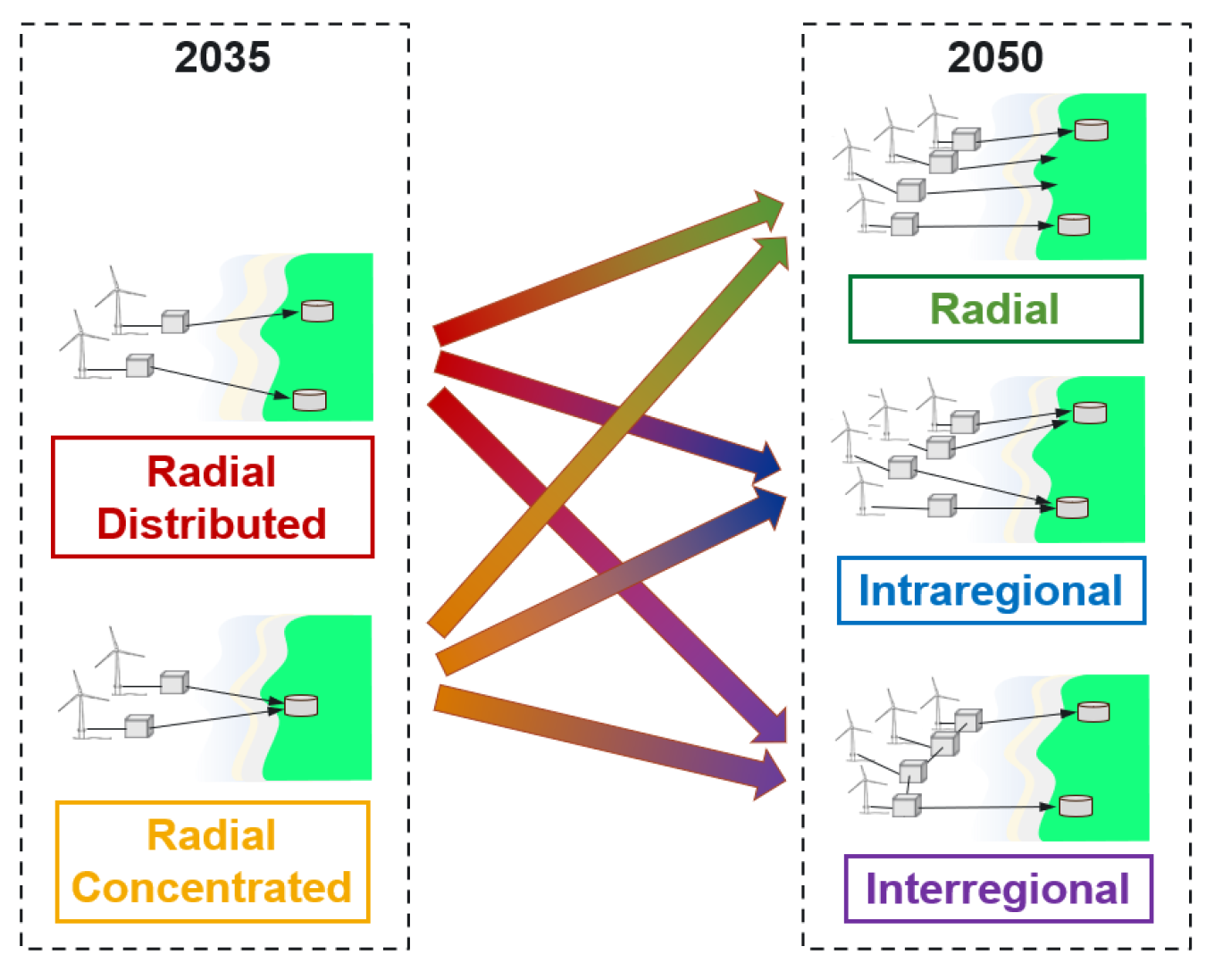Offshore wind (OSW) energy is an emerging resource for producing abundant, domestic energy along the coastal regions of the United States and provides benefits such as cost savings, improved grid reliability through higher and more stable capacity factors, local energy resilience, and substantial job creation.
The West Coast has an opportunity to demonstrate U.S. leadership in floating OSW development that unlocks significant opportunities to foster domestic energy production, maximize economic benefits and domestic job creation, and enhance the region’s energy grid. Dedicated action now can ensure that the U.S. holds a market share—and potentially emerges as a manufacturing leader—in this growing global industry.
West Coast Offshore Wind Transmission Efforts
Action Plan for Offshore Wind Transmission Development in the U.S. West Coast Region:
In January 2025, the Grid Deployment Office, in partnership with BOEM, released the Action Plan for Offshore Wind Transmission Development in the U.S. West Coast Region (Action Plan) to address OSW transmission challenges on the U.S. West Coast. The Action Plan provides recommendations on how to connect the first generation of West Coast offshore wind projects to the Western electric grid and support transmission over the next several decades.
West Coast Offshore Wind Transmission Convening Series: Throughout 2024, DOE and BOEM led a series of 12 workshops to develop a set of recommendations for addressing OSW transmission challenges along the West Coast. This targeted engagement process sought input from Tribal Nations, federal and state agencies, cable and transmission providers, fisheries organizations, non-governmental organizations, developers, unions, utilities, and other ocean co-users and interested parties to discuss the aspects of transmission planning which are most meaningful and applicable to them.
The Convening Series was complemented by a Request for Information (RFI) in August 2024 to allow individuals and organizations to submit written input about transmission topics, including siting, technology, and policy considerations. RFI responses were considered as the recommendations were prepared.
West Coast Offshore Wind Transmission Literature Review and Gaps Analysis: In February 2023, DOE’s Wind Energy Technologies Office released the West Coast Offshore Wind Transmission Literature Review and Gaps Analysis. This analysis reviews existing literature focusing on the technical evaluation of offshore wind energy transmission through potential points of interconnection located along the coastlines of California, Oregon, and Washington. The study took into consideration existing and emerging state policies and Bureau of Ocean Energy Management wind site lease activities.
West Coast Offshore Wind Transmission Study: DOE’s Pacific Northwest National Laboratory (PNNL) and National Renewable Energy Laboratory (NREL) spent the last two years studying the costs and benefits of adding floating offshore wind turbines along the United States' Pacific coast. The study evaluates multiple pathways for OSW through coordinated regional and interregional transmission solutions in the near term (2035) and long term (2040/2045/2050), under various combinations of electricity supply and demand, while supporting grid reliability and resilience and ocean co-use. The West Coast Offshore Wind Transmission Study, funded by DOE's Grid Deployment Office and co-managed by Wind Energy Technology Office, released its report on January 15, 2025.
Contact Us
For additional questions, contact the team at [email protected]. To learn more about GDO’s funding and financing programs made available through the Infrastructure Investment and Jobs Act and Inflation Reduction Act, see the Grid and Transmission Program Conductor.



